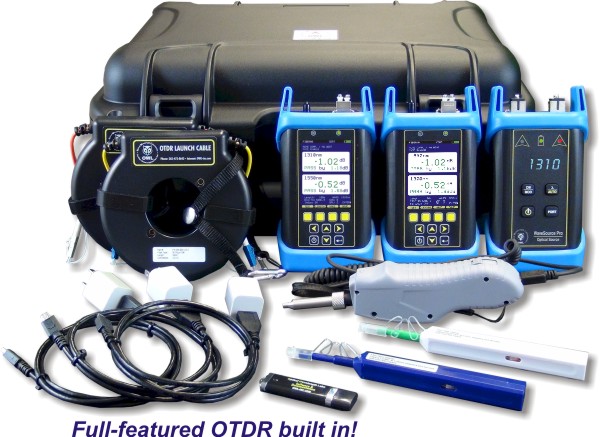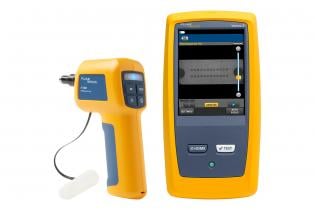Must-have criteria for selecting fibre testing equipment that meets current demands
Must-have criteria for selecting fibre testing equipment that meets current demands
Blog Article
A Comprehensive Guide to Optical Measurement System for Fiber Analysis
When it pertains to fiber evaluation, comprehending optical dimension systems is crucial for reviewing performance and making certain top quality. You'll discover crucial techniques like interferometry and spectroscopy, which help you measure vital parameters. However there's even more to it than just these methods; grasping attenuation measurement techniques can considerably influence your network's effectiveness. As you navigate via this guide, you'll discover understandings that can change your technique to fiber optics.
Recognizing Optical Measurement Systems
When you check out optical measurement systems, you'll find they're important for analyzing fibers with precision. These systems use light to examine various qualities of fibers, including diameter, refractive index, and harmony. By employing strategies like interferometry and spectroscopy, you can get useful insights into the fiber's properties.You'll discover that these systems are made to lessen errors and improve accuracy, ensuring dependable information for your evaluation. Different setups, such as single-mode and multi-mode systems, provide to particular fiber kinds, enabling you to choose the most effective fit for your needs.Moreover, the integration of advanced software program tools helps you analyze the information successfully, making it simpler to identify any inconsistencies or problems. As you check out deeper right into these dimension systems, you'll appreciate exactly how they streamline the logical process and enhance the general top quality of fiber production and screening.
Trick Specifications for Fiber Analysis
Key specifications for fiber evaluation play a crucial duty in determining the high quality and efficiency of fiber optics. When you review a fiber, you'll intend to concentrate on qualities such as depletion, transmission capacity, and modal dispersion. Depletion determines the loss of signal stamina as light journeys via the fiber. A lower attenuation worth indicates much better high quality and longer transmission distances - optical fibre diameter analyzer.Bandwidth describes the data-carrying capacity of the fiber and is vital for high-speed communication. You'll need to analyze the bandwidth to ensure it satisfies your application demands. Modal diffusion, which arises from the different rates at which light trips through various settings in multimode fibers, impacts signal clearness
Methods for Attenuation Measurement

Data transfer and Its Impact on Efficiency
Comprehending bandwidth is vital for optimizing fiber performance, as it straight affects the amount of data that can be sent over a network. Greater transmission capacity means you can send even more details concurrently, enabling faster communication and better general performance. When you're functioning with optical fibers, it's crucial to consider how bandwidth engages with fiber characteristics, such as core dimension and product properties.If the data transfer is limited, you may experience data loss or slower rates, affecting your applications. Additionally, different types of fibers can support varying bandwidth levels, so it is very important to choose the ideal fiber for your specific needs.You need to also remember that environmental variables, like temperature level and external disturbance, can affect data transfer. By comprehending these facets, you can make enlightened choices to improve your fiber optic systems, guaranteeing reputable and effective data transmission.
Refractive Index Measurement Approaches

Total Internal Representation
Total inner representation (TIR) acts as a fundamental principle for measuring the refractive index of fibers. When light journeys from a denser tool to a less dense one, it can only be totally reflected if the angle of occurrence surpasses a specific limit, understood as the critical angle. This sensation enables you to determine the refractive index by analyzing the angles at which light reflects or refracts. By utilizing a setup that directs light into a fiber and gauges the resulting angles, you can calculate the refractive index accurately. Recognizing TIR not just boosts your fiber analysis but also enhances the design and efficiency of optical systems. So, leveraging TIR can lead to extra efficient fiber-based applications.
Interferometric Strategies
Building on the concepts of complete inner reflection, interferometric techniques give a powerful means for measuring the refractive index of fibers with high precision. These approaches make use of the disturbance patterns created when beams split and recombine after taking a trip discover here different courses. You can utilize configurations like the Michelson or Mach-Zehnder interferometer to evaluate phase changes brought on by changes in refractive index. By meticulously adjusting your system and evaluating the resulting fringes, you can determine the refractive index with remarkable accuracy. It's critical to preserve steady environmental conditions to decrease mistakes. With these strategies, you'll boost your understanding of fiber residential or commercial properties, bring about better performance in different applications, from telecommunications to sensing unit innovation.
Modal Diffusion and Its Relevance
Modal diffusion refers to the dispersing of light pulses as they take a trip through a fiber, which can influence the total performance of the system. You'll see that this phenomenon can cause signal distortion, affecting data transmission prices and quality. Understanding its value is vital for enhancing fiber optic styles.
Meaning of Modal Dispersion
In optical fiber interactions, modal diffusion plays a significant duty in figuring out signal quality and transmission rate. It occurs when different light modes take a trip at differing rates with the fiber. Since each mode has unique paths and characteristics, they can come to the getting end at various times. This time around distinction can lead to signal spreading and distortion, which can degrade the overall performance of the interaction system. You may come across modal diffusion mainly in multimode fibers, where the several courses of light aggravate the problem. Recognizing modal dispersion is important for enhancing fiber styles and making sure that your communication systems operate effectively, maintaining the integrity of the transmitted signals over longer distances.
Impacts on Fiber Efficiency
Understanding modal diffusion assists highlight its results on fiber efficiency. This phenomenon takes place when various modes of light traveling at varying rates within the fiber, leading to signal spreading in time. As you examine fiber optics, you'll see that boosted modal diffusion can significantly deteriorate signal top quality, causing minimized transmission capacity and longer transmission ranges. In sensible terms, this suggests your data can arrive distorted or delayed, impacting general interaction efficiency. To alleviate these impacts, you may consider using single-mode fibers, which minimize modal diffusion. By selecting the right fiber kind and recognizing how modal diffusion affects performance, you can enhance transmission quality and assurance reliable data transfer in your optical measurement systems.
Devices and Technologies for Optical Measurements
When it concerns optical dimensions, numerous cutting-edge optical measurement system tools and technologies go to your disposal to enhance fiber evaluation. You'll find fiber optic testers, which examine signal quality and performance, essential for preserving excellent network performance. Optical time-domain reflectometers (OTDRs) are critical for finding mistakes and measuring loss over ranges, supplying comprehensive insights into fiber honesty. Additionally, spectrometers can evaluate light spectra, aiding you determine material homes and composition.Don' t neglect the significance of imaging systems, like digital microscopes, that enable you to visually check fiber surface areas for issues. Likewise, take into consideration making use of polarization analyzers to determine tension and stress in fibers, which is necessary for understanding their actions under numerous conditions. By leveraging these tools and innovations, you can considerably improve your fiber analysis processes, making sure integrity and high performance in your optical networks.
Often Asked Questions
What Are the Expenses Connected With Optical Measurement Solutions?
The prices connected with optical measurement systems can vary substantially. You'll require to examine equipment costs, maintenance costs, software application licenses, and possible training expenses. Budgeting very carefully will help you prevent unanticipated monetary obstacles down the line.

Just How Frequently Should Fiber Evaluation Be Performed?
You need to do fiber evaluation consistently, generally every 6 months or after considerable changes in the environment (optical measurement system). important site This guarantees suitable efficiency and assists determine potential issues before they influence your system's effectiveness and integrity
Can Optical Measurement Equipments Be Calibrated in your home?
Yes, you can calibrate optical dimension systems at home, yet it calls for accuracy. Ensure you comply with the manufacturer's guidelines, use suitable calibration criteria, and ascertain your results to ensure precision in your measurements.
What Industries Frequently Use Optical Measurement Systems?
You'll locate optical dimension systems widely made use of in sectors such as telecoms, production, health care, and research. They're vital for quality assurance, fiber analysis, and making certain precise measurements in different applications, improving performance and precision across sectors.
Are There Any Kind Of Safety And Security Worry About Optical Measurement Systems?
Yes, there are safety worry about optical dimension systems. You ought to constantly use protective eyeglasses to protect your eyes from intense light sources and assurance correct training to handle devices safely and avoid crashes.
Report this page